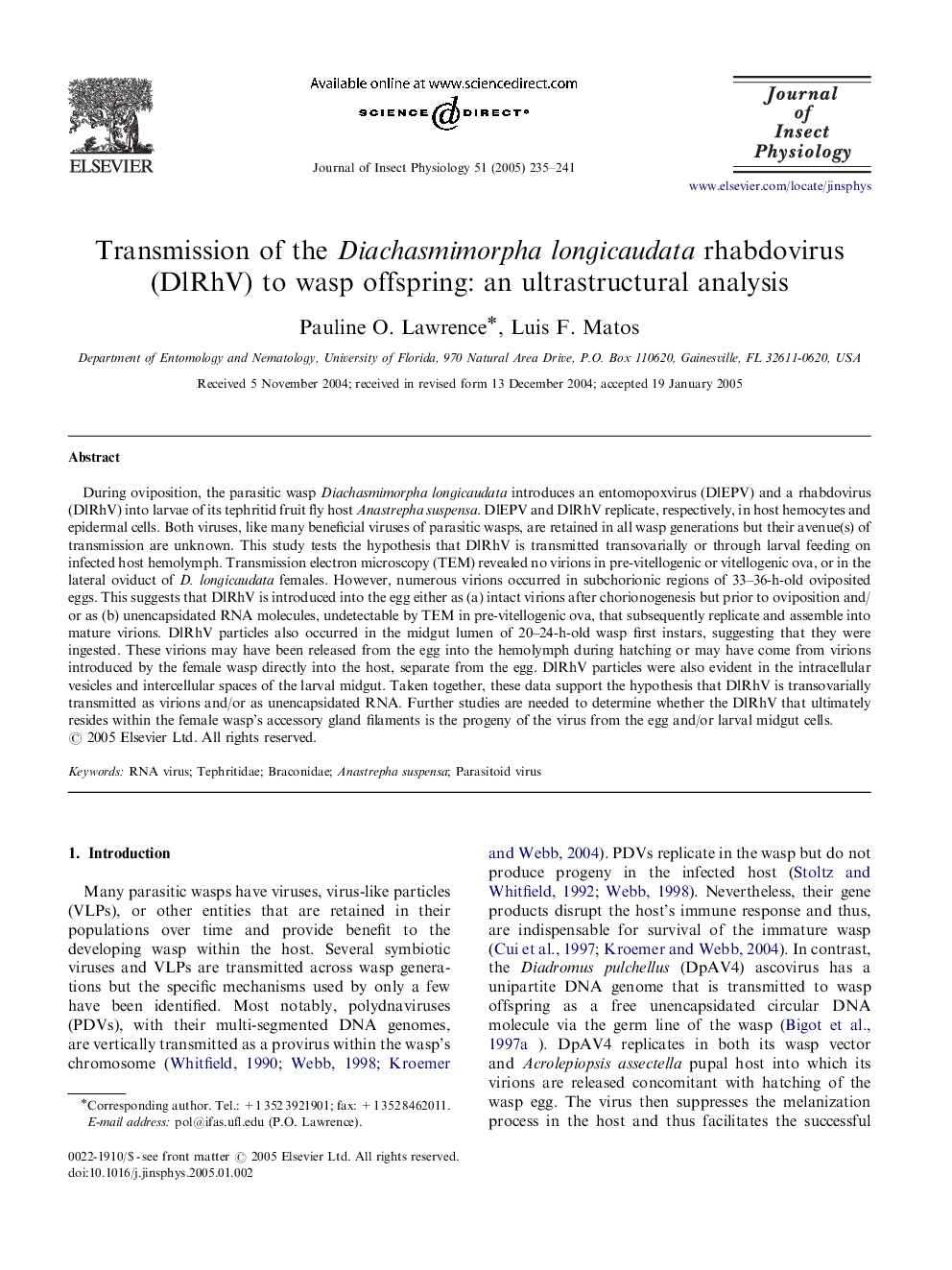| کد مقاله | کد نشریه | سال انتشار | مقاله انگلیسی | نسخه تمام متن |
|---|---|---|---|---|
| 9147238 | 1165395 | 2005 | 7 صفحه PDF | دانلود رایگان |
عنوان انگلیسی مقاله ISI
Transmission of the Diachasmimorpha longicaudata rhabdovirus (DlRhV) to wasp offspring: an ultrastructural analysis
دانلود مقاله + سفارش ترجمه
دانلود مقاله ISI انگلیسی
رایگان برای ایرانیان
موضوعات مرتبط
علوم زیستی و بیوفناوری
علوم کشاورزی و بیولوژیک
دانش حشره شناسی
پیش نمایش صفحه اول مقاله

چکیده انگلیسی
During oviposition, the parasitic wasp Diachasmimorpha longicaudata introduces an entomopoxvirus (DlEPV) and a rhabdovirus (DlRhV) into larvae of its tephritid fruit fly host Anastrepha suspensa. DlEPV and DlRhV replicate, respectively, in host hemocytes and epidermal cells. Both viruses, like many beneficial viruses of parasitic wasps, are retained in all wasp generations but their avenue(s) of transmission are unknown. This study tests the hypothesis that DlRhV is transmitted transovarially or through larval feeding on infected host hemolymph. Transmission electron microscopy (TEM) revealed no virions in pre-vitellogenic or vitellogenic ova, or in the lateral oviduct of D. longicaudata females. However, numerous virions occurred in subchorionic regions of 33-36-h-old oviposited eggs. This suggests that DlRhV is introduced into the egg either as (a) intact virions after chorionogenesis but prior to oviposition and/or as (b) unencapsidated RNA molecules, undetectable by TEM in pre-vitellogenic ova, that subsequently replicate and assemble into mature virions. DlRhV particles also occurred in the midgut lumen of 20-24-h-old wasp first instars, suggesting that they were ingested. These virions may have been released from the egg into the hemolymph during hatching or may have come from virions introduced by the female wasp directly into the host, separate from the egg. DlRhV particles were also evident in the intracellular vesicles and intercellular spaces of the larval midgut. Taken together, these data support the hypothesis that DlRhV is transovarially transmitted as virions and/or as unencapsidated RNA. Further studies are needed to determine whether the DlRhV that ultimately resides within the female wasp's accessory gland filaments is the progeny of the virus from the egg and/or larval midgut cells.
ناشر
Database: Elsevier - ScienceDirect (ساینس دایرکت)
Journal: Journal of Insect Physiology - Volume 51, Issue 2, February 2005, Pages 235-241
Journal: Journal of Insect Physiology - Volume 51, Issue 2, February 2005, Pages 235-241
نویسندگان
Pauline O. Lawrence, Luis F. Matos,